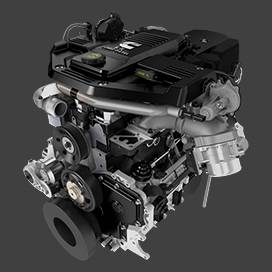សីហា . 07, 2024 03:15 Back to list
Guidelines for Determining the Right Time to Replace Rear Brake Drums on Your Vehicle
When to Replace Rear Brake Drums
Brake systems are among the most critical components of any vehicle, ensuring safety and performance during operation. While modern vehicles predominantly utilize disc brakes for their superior performance, many older models and some current designs still use rear brake drums. Understanding when to replace these components is vital for maintaining vehicle safety and performance.
Understanding Brake Drums
Brake drums work in conjunction with brake shoes to slow down and stop the vehicle. When the brake pedal is pressed, hydraulic pressure forces the brake shoes outward against the inner surface of the drum, creating friction that slows the wheel's rotation. Over time, brake drums can wear out due to heat, friction, and corrosion, which can lead to decreased performance and safety concerns.
Signs of Worn Brake Drums
1. Decreased Braking Performance One of the first signs that your rear brake drums may need replacement is a noticeable decrease in braking effectiveness. If it takes longer to stop or if the vehicle pulls to one side while braking, this could indicate that the drums or other brake components are worn.
2. Unusual Noises If you hear grinding or scraping noises when braking, it’s a strong indication that the brake shoes may be worn down to the metal, which can damage the brake drums. Thumping or pulsating sounds may also suggest that the drums are warped or unevenly worn.
3. Vibrations If you experience vibrations in the brake pedal, steering wheel, or throughout the vehicle when braking, it may suggest that the brake drums are warped. This could also indicate uneven wear on the brake shoes, necessitating a closer inspection and possible replacement.
when to replace rear brake drums

4. Visual Inspection Regularly inspect the brake drums for visible signs of wear or damage. Look for grooves, cracks, or corrosion on the surface. If the drums are excessively rusted or if you notice any significant surface imperfections, replacement is necessary.
5. Brake Warning Light Many modern vehicles are equipped with dashboard indicators that alert drivers when there is an issue with the brake system. If you see the brake warning light illuminate, it may be time to have the brakes inspected, including the brake drums.
Recommended Replacement Frequency
The lifespan of rear brake drums can vary significantly based on driving habits, vehicle type, and environmental conditions. Typically, it is advisable to have your brake drums inspected every 20,000 to 30,000 miles. However, if you frequently drive in stop-and-go traffic, tow heavy loads, or operate in hilly terrain, your brake components may wear out faster.
It’s essential to consult your vehicle owner’s manual, as it often provides specific recommendations for brake maintenance and replacement schedules. In addition, consider having your brakes checked during routine service intervals or when you notice any of the signs mentioned previously.
Conclusion
Maintaining your brake system, including replacing rear brake drums when necessary, is crucial for keeping your vehicle safe and responsive. Ignoring the signs of worn brake drums can lead not only to decreased braking performance but also to costly repairs and safety risks. If you notice any symptoms of brake wear or if you’re unsure about the condition of your brake drums, seek professional advice from a certified mechanic. Your safety on the road depends on it. Prioritizing regular inspections and timely replacements can ensure that your vehicle remains in optimal working condition for years to come.
-
High-Quality Brake Drum MAZ – Durable Drum Brake Drum & Brake Drum and Brake Shoe Solutions
NewsJul.04,2025
-
Brake Drum Man - High-Quality Drum Brake Drums & Brake Shoes for Reliable Performance
NewsJun.24,2025
-
High-Quality Brake Drum Kamaz – Durable Drum Brake Drum & Brake Shoe Replacement
NewsJun.10,2025
-
High-Quality Brake Drum Liza for Drum Brake Systems - Superior Durability and Performance
NewsJun.10,2025
-
High-Quality Brake Drum Kamaz – Durable Drum Brake Drum & Brake Shoe Solutions
NewsJun.10,2025
-
Durable Kamaz Brake Drums High-Performance Truck Parts
NewsJun.09,2025
